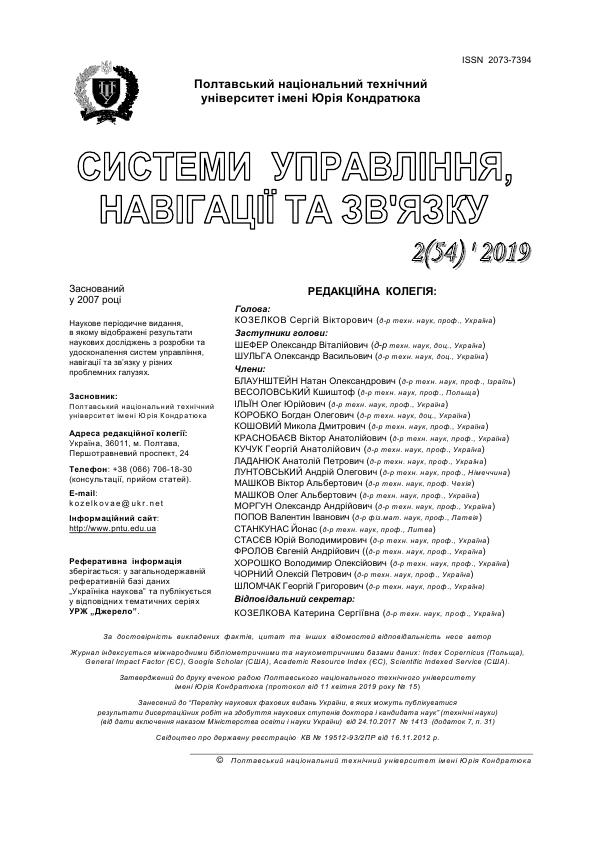METRICS AND TOOLS FOR EXPLORATION OF THE CROSSCUTTING FUNCTIONALITY IN LEGACY SOFTWARE SYSTEMS
DOI:
https://doi.org/10.26906/SUNZ.2019.2.123Keywords:
crosscutting functionality, post object-oriented technologies, metrics, legacy software systemAbstract
The subject matter of the article are metrics and tools for studying the influence of crosscutting functionality in legacy software systems (LSS). The goal is to increase the efficiency of post-object-oriented technologies (POOT) usage of in the process of maintainability legacy software systems. The tasks are: consider the problem of crosscutting functionality (CF) in the development and maintenance of LSS, possible types and classification of CF, purpose metrics for studying the negative impact of CF, develop a classification procedure for CF, a software tool for implementing the proposed approach and conducting experimental research. The methods used are quantitative software quality metrics, object-oriented and post-object-oriented methods for analyzing and synthesizing software. The following results were obtained. The features of the negative impact of CF on the maintenance of the LSS are investigated, a set of metrics for CF-measurement (the proportion of the CF in the source code of the target LSS, the distribution of the CF among the software components of the LSS, the degree of dispersion of the CF in the LSS components) are proposed. A procedure for CF-classifying has been developed and a software tool has been proposed for realizing an assessment of the negative impact of CF on the maintenance of LSS. Conclusions. Experimental LSS test cases showed that the smallest degree of presence of the CF after modifying the structure of the LSS on the basis of POOT ensures the use of an aspectoriented approach. The direction of further research is to develop a methodology and conduct experiments to assess the impact of the application of POOT on the level of presence of defects in the LSS code.Downloads
References
Нагорний, К.А. Моделі та інструментальні засоби супроводу програмних систем на основі пост об’єктноорієнтованих технологій: дис. … канд. техн. наук: 05.13.06 / Національний технічний університет «Харківський політехнічний інститут», Харків, Україна, 2016. 182 с.
Kaur, A., Johari, K. Identification of Crosscutting Concerns: A Survey. / Kaur A., Johari K. // International Journal of Engineering Science and Technology. – 2009. – vol. 1(3). – pp. 166-172.
Ткачук, Н.В., Нагорный, К.А. Об одном подходе к оценке эффективности применения пост объектноориентированных технологий при сопровождении программных систем / Ткачук Н.В., Нагорный К.А. // Проблемы программирования. – К.: НАН України. – 2010. – № 2-3 (спец. выпуск). – с. 252 - 260.
Lanza, M., Marinescu, R. Object-Oriented Metrics in Practice: Using Software Metrics to Characterize, Evaluate, and Improve the Design of Object-Oriented Systems/ Lanza, M., Marinescu, R. – Germany: Springer-Verlag, 2006. – 207 p.
Unified Modeling Language (UML) Resource Page //Офіційний вєб-ресурс уніфікованої мови моделювання UML, що розробляється консорціумом OMG – Object Management Group [Електронний ресурс] – Режим доступу: http://www.uml.org
Eaddy, M., Aho, A., Murphy, G. C. Identifying, Assigning, and Quantifying Crosscutting Concerns / Eaddy M., Aho A., Murphy G. C. // Proceedings of the ACoM ’07: the First International Workshop on Assessment of Contemporary Modularization Techniques – 2007.
Нагорный К. А. Разработка и применение методики оценки эффективности пост объектно-ориентированных технологий. / Нагорный К.А. // Східно-Европейський журнал передових технологій. – 2013. – № 3/10 (63). – с. 21–25.
Нагорний К. А. Експериментальне дослідження ефективності пост об’єктна-орієнтованих технологій розробки програмних систем. / К. А. Нагорний, М. В. Ткачук, Ю. М. Жадан // Матеріали XXII міжнародної науково-практичної конференції «Інформаційні технології: наука, техніка, технологія, освіта, здоров’я», НТУ «ХПІ», Харків, 15-17 жовтня 2014 р. – с. 15.
Черезов Д. С. Обзор основных методов классификации и кластеризации данных / Черезов Д. С., Тюкачев Н. А., Воронежский государственный университет, 2009.
Apel, S., Batory, D., Rosenmüller, M. On the Structure of Crosscutting Concerns: Using Aspects or Collaborations? / Apel S., Batory D., Rosenmüller M. // Proceedings of the AOPLE’06: the 1st Workshop on Aspect-Oriented Product Line Engineering co-located with the GPCE’06: the 5th International Conference on Generative Programming and Component Engineering. – Portland, OR, USA. – Oct. 2006.
Figueiredo, E. Concern-Oriented Heuristic Assessment of Design Stability. Submitted for the Degree of PhD. / Figueiredo E. – Lancaster University, Lancaster, UK, October 2009. – 237 p.
Marin, M., Moonen, L., Deursen, A.V. A Classification of Crosscutting Concerns. / Marin M., Moonen L., Deursen A.V. // Proceedings of the ICSM’2005: the 21st IEEE International Conference on Software Maintenance, IEEE Computer Society. – 2005. – pp. 673-676.
Marin, M., Moonen, L., Deursen, A.V. An Approach to Aspect Refactoring Based on Crosscutting Concerns Types. / Marin M., Moonen L., Deursen A.V. // Proceedings of the MACS’2005: Workshop on Modeling and Analysis of Concerns in Software, ACM. – St. Louis, Missouri. – 2005. – pp. 1-5.
Marin, M. Formalizing typical crosscutting concerns. / Marin M. // Proceedings of the 21st IEEE International Conference on Software Maintenance, IEEE Computer Society. – 2005. – pp 673-676.
Gamma, E. et al. Design Patterns: Elements of Reusable Object-Oriented Software / Gamma E., Helm R., Johnson R., Vlissides J. – Addison-Wesley, 1994. – 395 p.




